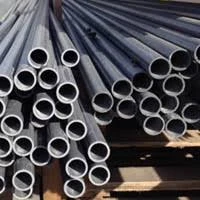
-
 Afrikaans
Afrikaans -
 Albanian
Albanian -
 Amharic
Amharic -
 Arabic
Arabic -
 Armenian
Armenian -
 Azerbaijani
Azerbaijani -
 Basque
Basque -
 Belarusian
Belarusian -
 Bengali
Bengali -
 Bosnian
Bosnian -
 Bulgarian
Bulgarian -
 Catalan
Catalan -
 Cebuano
Cebuano -
 China
China -
 China (Taiwan)
China (Taiwan) -
 Corsican
Corsican -
 Croatian
Croatian -
 Czech
Czech -
 Danish
Danish -
 Dutch
Dutch -
 English
English -
 Esperanto
Esperanto -
 Estonian
Estonian -
 Finnish
Finnish -
 French
French -
 Frisian
Frisian -
 Galician
Galician -
 Georgian
Georgian -
 German
German -
 Greek
Greek -
 Gujarati
Gujarati -
 Haitian Creole
Haitian Creole -
 hausa
hausa -
 hawaiian
hawaiian -
 Hebrew
Hebrew -
 Hindi
Hindi -
 Miao
Miao -
 Hungarian
Hungarian -
 Icelandic
Icelandic -
 igbo
igbo -
 Indonesian
Indonesian -
 irish
irish -
 Italian
Italian -
 Japanese
Japanese -
 Javanese
Javanese -
 Kannada
Kannada -
 kazakh
kazakh -
 Khmer
Khmer -
 Rwandese
Rwandese -
 Korean
Korean -
 Kurdish
Kurdish -
 Kyrgyz
Kyrgyz -
 Lao
Lao -
 Latin
Latin -
 Latvian
Latvian -
 Lithuanian
Lithuanian -
 Luxembourgish
Luxembourgish -
 Macedonian
Macedonian -
 Malgashi
Malgashi -
 Malay
Malay -
 Malayalam
Malayalam -
 Maltese
Maltese -
 Maori
Maori -
 Marathi
Marathi -
 Mongolian
Mongolian -
 Myanmar
Myanmar -
 Nepali
Nepali -
 Norwegian
Norwegian -
 Norwegian
Norwegian -
 Occitan
Occitan -
 Pashto
Pashto -
 Persian
Persian -
 Polish
Polish -
 Portuguese
Portuguese -
 Punjabi
Punjabi -
 Romanian
Romanian -
 Russian
Russian -
 Samoan
Samoan -
 Scottish Gaelic
Scottish Gaelic -
 Serbian
Serbian -
 Sesotho
Sesotho -
 Shona
Shona -
 Sindhi
Sindhi -
 Sinhala
Sinhala -
 Slovak
Slovak -
 Slovenian
Slovenian -
 Somali
Somali -
 Spanish
Spanish -
 Sundanese
Sundanese -
 Swahili
Swahili -
 Swedish
Swedish -
 Tagalog
Tagalog -
 Tajik
Tajik -
 Tamil
Tamil -
 Tatar
Tatar -
 Telugu
Telugu -
 Thai
Thai -
 Turkish
Turkish -
 Turkmen
Turkmen -
 Ukrainian
Ukrainian -
 Urdu
Urdu -
 Uighur
Uighur -
 Uzbek
Uzbek -
 Vietnamese
Vietnamese -
 Welsh
Welsh -
 Bantu
Bantu -
 Yiddish
Yiddish -
 Yoruba
Yoruba -
 Zulu
Zulu
frp spraying pipe
Understanding FRP Spraying Pipes An Overview
Fiber-reinforced plastic (FRP) spraying pipes have garnered significant attention in various industrial applications due to their exceptional properties and ease of use. These pipes, made from a composite material of plastic reinforced by fibers, primarily offer durability, corrosion resistance, and lightweight characteristics, making them a superior choice for a diverse range of environments.
Composition and Manufacturing
FRP pipes are constructed by embedding fibers, usually glass or carbon, within a plastic matrix such as epoxy or polyester resin. This configuration allows FRP pipes to maintain high strength while significantly reducing weight compared to traditional materials like steel or concrete. The process of manufacturing these pipes typically involves techniques such as open molding or spray-up processes, where the resin and fibers are sprayed into a mold to form the desired shape. This method not only enhances manufacturing efficiency but also improves the flexibility and adaptability of the pipe designs.
Advantages of FRP Spraying Pipes
1. Corrosion Resistance One of the standout features of FRP pipes is their excellent resistance to corrosion, which makes them ideal for transporting aggressive chemicals and fluids. Unlike metal pipes that can rust or degrade over time, FRP remains unaffected by most acids, salts, and bases, leading to longer service life and reduced maintenance costs.
2. Lightweight The lightweight nature of FRP pipes simplifies handling, transportation, and installation. This is particularly beneficial in projects where structural loads must be minimized, or where quick installation is essential to meet tight timelines.
3. Flexibility The ability to tailor the properties of FRP pipes (such as thickness, fiber type, and resin formulation) provides engineers with the flexibility to design pipes specific to the requirements of each application. This customization ensures that the pipes can withstand local environmental conditions, pressure levels, and chemical exposure.
frp spraying pipe

4. Thermal Insulation FRP pipes exhibit excellent thermal insulation properties, helping to maintain the temperature of the fluids being transported. This is particularly advantageous in industries like oil and gas, where temperature control is crucial for maintaining fluid properties and preventing operational issues.
5. Cost-Effectiveness Although the initial costs for FRP pipes may be higher than traditional materials, the long-term savings accumulated from reduced maintenance, lower energy costs, and fewer replacements make them a cost-effective solution in the long run.
Applications
FRP spraying pipes find a wide array of applications across various sectors, including
- Chemical Processing Ideal for transporting corrosive chemicals and solvents. - Water and Wastewater Treatment Used for piping in treatment plants and municipal water systems due to their resistance to chemicals and biological degradation. - Oil and Gas Suitable for both onshore and offshore applications, where resistance to aggressive environments is critical. - Construction Adaptively used in drainage systems, fire protection systems, and as structural components within civil engineering projects.
Conclusion
In summary, FRP spraying pipes represent a modern solution to many of the limitations posed by traditional piping materials. With their superior properties such as corrosion resistance, lightweight nature, and design flexibility, FRP pipes are quickly becoming a preferred choice in many industries. As the technology surrounding FRP continues to advance, the potential applications and benefits are only expected to expand, solidifying their role in the future of engineering and infrastructure.
Latest news
-
Exploring the Benefits of Top Hammer Drifter Rods for Enhanced Drilling PerformanceNewsJun.10,2025
-
High-Precision Fiberglass Winding Machine for GRP/FRP Pipe Production – Reliable & Efficient SolutionsNewsJun.10,2025
-
FRP Pipes & Fittings for Shipbuilding - Corrosion-Resistant & LightweightNewsJun.09,2025
-
Premium FRP Flooring Solutions Durable & Slip-ResistantNewsJun.09,2025
-
Premium Fiberglass Rectangular Tanks Durable & Lightweight SolutionNewsJun.09,2025
-
Tapered Drill String Design Guide Durable Performance & UsesNewsJun.09,2025









